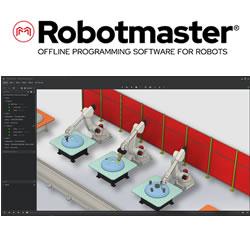Mastering peak season with robotics & automation

Peak season has always posed a logistics challenge for businesses, adding complexity to inventory management and workforce allocation, and intensifying time pressures. However, recent years have amplified these issues, with economic volatility and global conflicts making demand spikes harder to forecast. For example, last year’s peak season was more subdued, resulting in a flatter, more prolonged peak rather than the sharp demand spikes we have experienced in previous years.
This year, continued economic uncertainty and geopolitical disruption are once again complicating peak season planning, compounded by the ongoing industry-wide labor shortage which makes it harder to scale the workforce fast enough to meet demand. In this challenging and unpredictable environment, robotics, automation and analytics offer a path to success. By improving speed, accuracy, and scalability, these tools can help businesses navigate peak season complexities more effectively, ensuring smoother operations even under pressure.
Tackling labor shortages with automation
 Hiring seasonal staff to manage peak periods has long been standard practice but with the logistics sector expecting to face worker shortages of 400,000 by 2026[1], this is becoming increasingly difficult and unsustainable. The struggle to recruit and scale a seasonal workforce risks compromising service levels at a critical time and has even led to some businesses dialing back their usual program of discounts and promotions in recent years, jeopardizing sales.
Hiring seasonal staff to manage peak periods has long been standard practice but with the logistics sector expecting to face worker shortages of 400,000 by 2026[1], this is becoming increasingly difficult and unsustainable. The struggle to recruit and scale a seasonal workforce risks compromising service levels at a critical time and has even led to some businesses dialing back their usual program of discounts and promotions in recent years, jeopardizing sales.
Robotic solutions can help alleviate these challenges by unlocking additional capacity within logistics operations. For instance, goods-to-person technologies, which can bring shelves, bins or pallets to operators, improve picking accuracy by up to 99% and boost productivity by up to 300%. Meanwhile, assisted picking robots, which guide workers along optimized routes – or even intelligently swarm across the picking area – can increase productivity by up to 200%. Similarly, indoor robotic transport systems – such as Autonomous Mobile Robots (AMR) or Automated Guided Vehicles (AGV) deliver significant time savings by efficiently moving items across warehouses. These collaborative robots or "cobots" offer further support by working alongside employees and taking on labor-intensive tasks, freeing up colleagues for more value-adding roles.
By integrating these robotic systems, alongside other automation such as automated storage and retrieval systems (ASRS), robotic unloading solutions and automated packing machines, businesses can effectively streamline their picking and packing processes, reducing the time and manpower needed. These technologies enable rapid scaling during peak season, minimising the need for temporary workers and guaranteeing a high level of service that tackles congestion and errors which have historically been more common during periods of high demand.
Optimizing inventory with automation and AI
Beyond addressing labor shortages, automation plays a critical role in inventory management. AI and data analytics tools help businesses predict demand more accurately, reducing the costly risk of both overstocking and stock-outs. By analysing historical data and trends related to consumer behavior, market conditions, and even weather patterns, AI enhances the precision of demand forecasting allowing more effective peak planning and resource allocation.
These analytics solutions can also provide real-time inventory updates, ensuring businesses have up-to-date stock information during peak periods when delays in fulfillment or running out of key stock can result in lost sales. They help businesses meet consumer expectations, preserving customer loyalty. For example, asset tracking and monitoring sensors (Internet of Things – IoT) offer visibility into the location and condition of stock, guaranteeing accurate inventory checks while increasing inbound productivity by up to 80%. By harnessing the data from these tools, businesses can make informed decisions to optimize inventory levels across peak seasons and boost overall performance.
Overcoming barriers to robotics and automation
With peak season generating a significant portion of annual sales, it’s essential that businesses have the right supply chain solutions in place. While the benefits of automation—such as reduced operational costs, fewer errors, and increased efficiency—are clear, the upfront investment can be an obstacle for some businesses.
 To manage these costs, businesses can partner with third-party logistics providers that have established relationships with technology vendors. This allows companies to leverage cutting-edge robotics and automation solutions while limiting the financial burden. Some robotics can be deployed on a short-term basis, either dialing up automation in warehouses where this technology is already in place or introducing it into new and suitable environments, ensuring flexibility and cost efficiency while directly addressing seasonal labor shortages.
To manage these costs, businesses can partner with third-party logistics providers that have established relationships with technology vendors. This allows companies to leverage cutting-edge robotics and automation solutions while limiting the financial burden. Some robotics can be deployed on a short-term basis, either dialing up automation in warehouses where this technology is already in place or introducing it into new and suitable environments, ensuring flexibility and cost efficiency while directly addressing seasonal labor shortages.
By embracing the right robotics solutions to complement the workforce, businesses can build smarter, more efficient and resilient supply chains with the extended capacity to cope with unknowns in seasonal demand.
[1] CIPS Supply Management 2022
Featured Product

